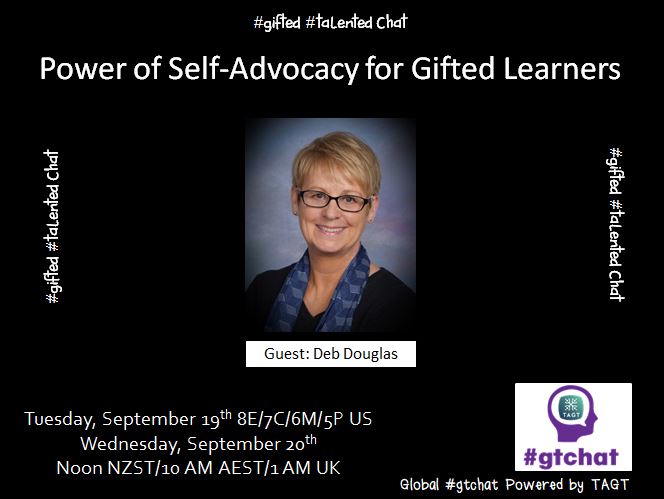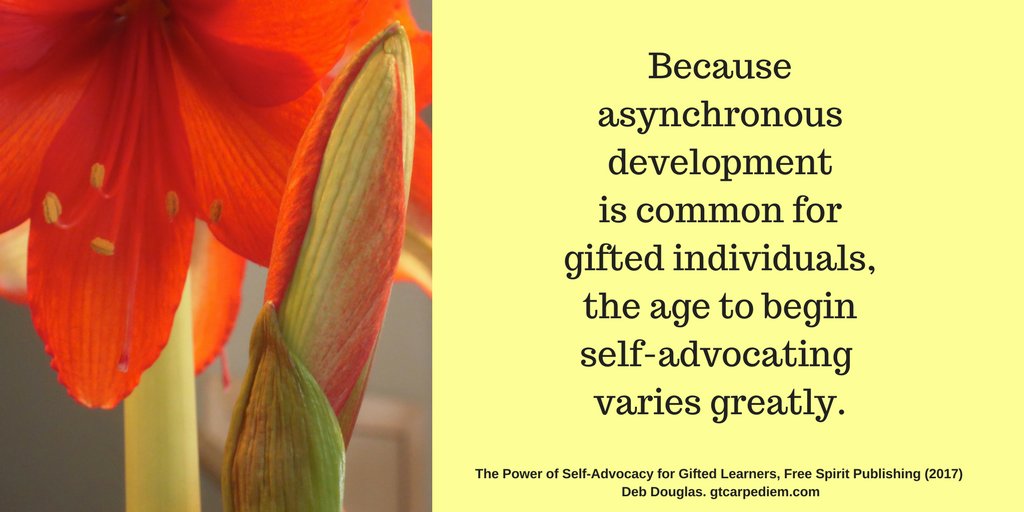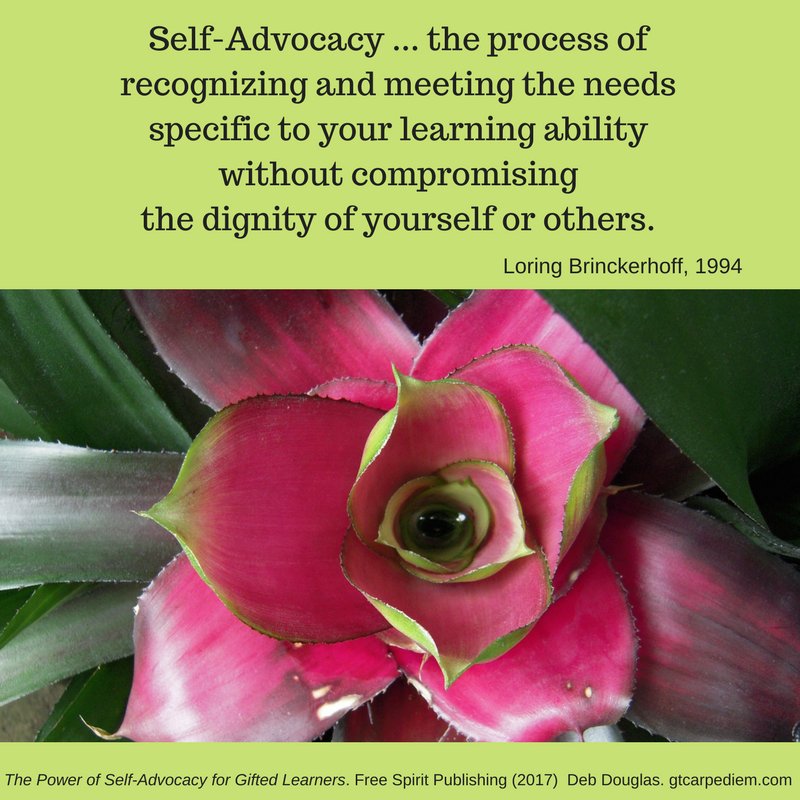
The Power of Self-Advocacy for Gifted Learners was recently released by Free Spirit Publishing and we were excited to have the author, Deb Douglas, as our guest this week on #gtchat. It proved to be a much needed topic and drew many new participants to the chat.
One of the greatest impediments to self-advocacy for gifted learners are the adults who become over-involved. Far too often, parents and teachers are so used to advocating when kids are young; they don’t know when to stop.

Self-advocacy is a part of growing up. A key benefit of teaching gifted learners to self-advocate is that it has a profound effect on a student’s later success. Gifted people in general use self-advocacy techniques throughout their lives; but they must learn them first.
Like all students, gifted learners’ educational experiences should ensure continual growth in academics and socially. They should be taught to advocate for experiences they truly want and will use.

What should students consider when self-assessing their own needs prior to self-advocacy? Self-assessment needs to start early and develop into a continual process throughout their time in school. It should be combined with determining personal goals and how to meet them.
Parents play an important role in helping students become successful self-advocates. Parents are their child’s first role model. They should be consistent, positive, and empathetic to child’s needs. Students will find success as self-advocates when parents learn to allow their child to take the lead when ready.

Students should first create an Action Plan. They go hand in hand with setting goals and deciding how they will be reached. Action plans should list necessary steps and a realistic timeline to reach goals. A transcript of this chat may be found at our Storify page.

Global #gtchat Powered by the Texas Association for the Gifted and Talented is a weekly chat on Twitter. Join us Tuesdays at 8E/7C/6M/5P in the U.S. and Wednesdays at Noon NZST/10 AM AEST/1 AM UK to discuss current topics in the gifted community and meet experts in the field. Transcripts of our weekly chats can be found at Storify. Our Facebook Page provides information on the chat and news & information regarding the gifted community. Also, checkout our Pinterest Page and Playlist on YouTube.
 About the author: Lisa Conrad is the Moderator of Global #gtchat Powered by TAGT and Social Media Manager of the Global #gtchat Community. She is a longtime advocate for gifted children and also blogs at Gifted Parenting Support. Lisa can be contacted at: gtchatmod@gmail.com
About the author: Lisa Conrad is the Moderator of Global #gtchat Powered by TAGT and Social Media Manager of the Global #gtchat Community. She is a longtime advocate for gifted children and also blogs at Gifted Parenting Support. Lisa can be contacted at: gtchatmod@gmail.com
Links:
Power of Self-Advocacy for Gifted Learners: Teaching the 4 Essential Steps to Success (Amazon)
Empower Gifted Learners to Advocate for Themselves
About GT Carpe Diem Consultant, Deb Douglas
Deb Douglas’ Speaker/Author Brochure (pdf)
GT Carpe Diem Workshop Brochure (pdf)
About Deb Douglas (Free Spirit Publishing)
GT Carpe Diem (Facebook)
Four Simple Steps to Self-Advocacy
Pre-Conference: Empowering Gifted Students’ Self-Advocacy at WATG 2017
What Makes You Unique – Fostering an Ongoing, Honest, Factual Dialogue (pdf p.23)
Living with Intensity Understanding Sensitivity, Excitability & Emotional Development of Gifted (Amazon)
When Gifted Kids Don’t Have All the Answers: How to Meet Their Social & Emotional Needs (Amazon)
Smart Teens’ Guide to Living with Intensity: How to Get More Out of Life and Learning (Amazon)
More Than a Test Score: Teens Talk About Being Gifted, Talented, or Otherwise Extra-Ordinary (Amazon)
Letting Go While Holding On and Changing BLAH to AHHHHH! (pdf) Courtesy of NAGC
Re-Forming Gifted Education: How Parents and Teachers Can Match the Program to the Child (Amazon)
Stepping Back from Overparenting: A Stanford Dean’s Perspective (Podcast 21:46)
Title graphic courtesy of Lisa Conard.
Photo and all other graphics courtesy of Deb Douglas.

